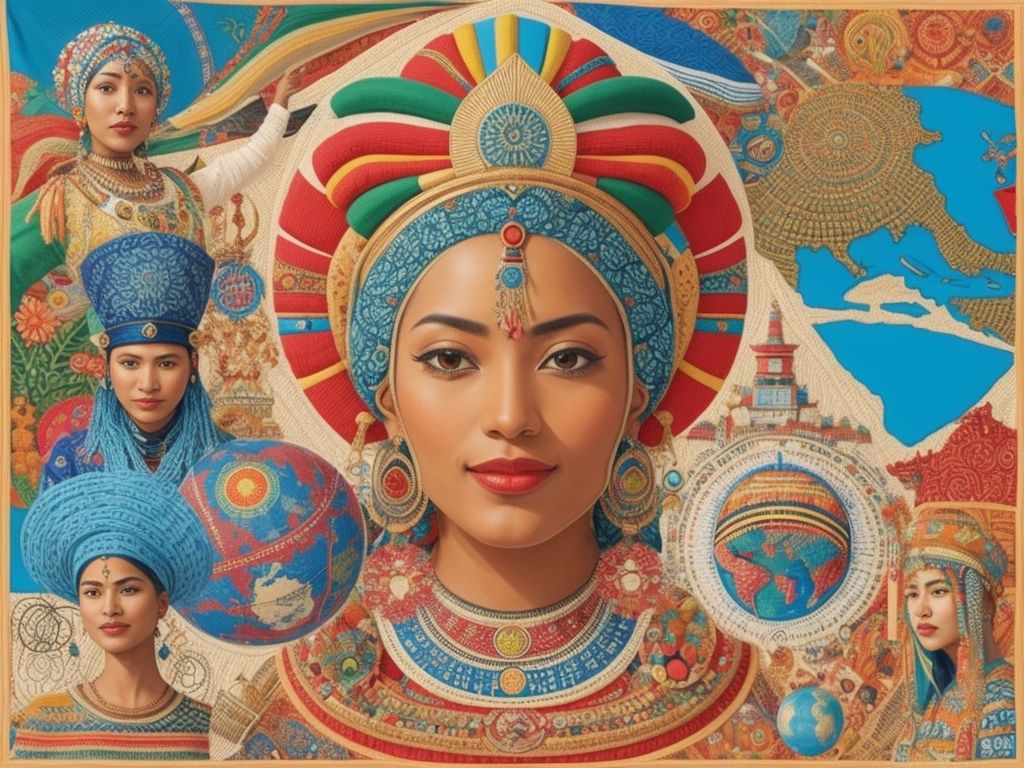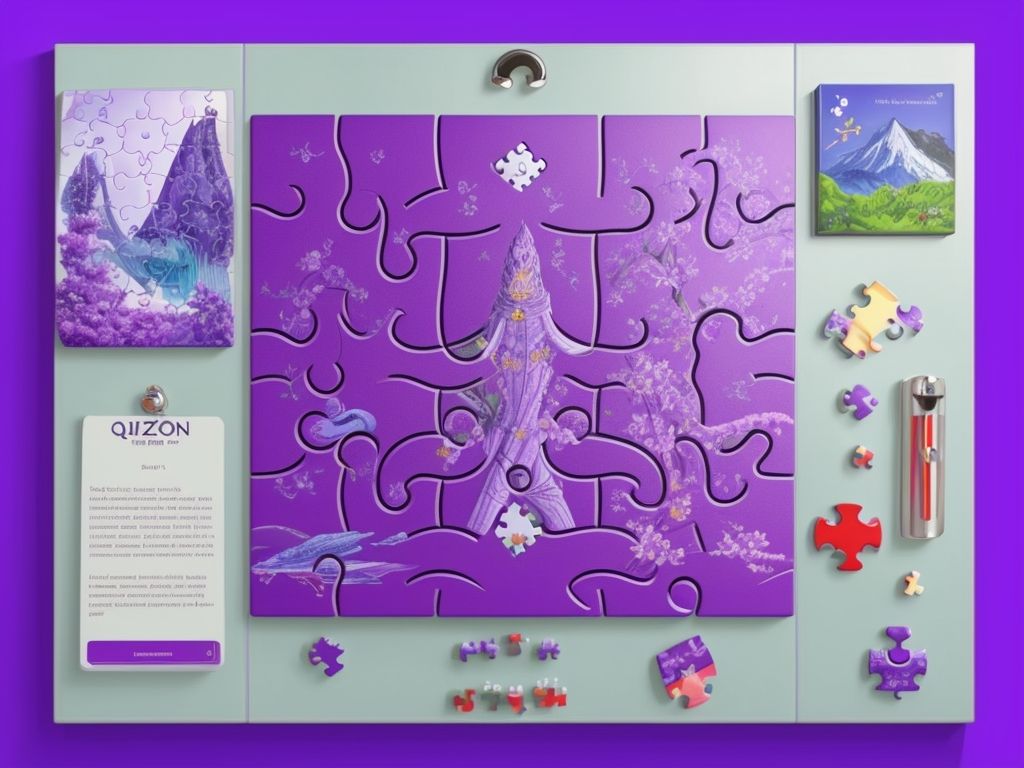How to Create a Cultural Identity Quiz
Creating a cultural identity quiz can be a fun and educational way to engage with your audience and promote cultural awareness. Understanding the importance of cultural identity is the first step in developing a quiz that resonates with people from diverse backgrounds.
By creating a cultural identity quiz, you have the opportunity to explore and celebrate different cultures, fostering a sense of inclusivity and understanding.
To create a cultural identity quiz, follow these steps:
1. Determine the purpose of the quiz: Decide whether the quiz is intended for entertainment, education, or both.
2. Define the target audience: Identify the demographic you want to reach and tailor the quiz content accordingly.
3. Select cultural identity themes: Choose specific aspects of cultural identity to focus on, such as traditions, languages, festivals, or cuisine.
4. Gather relevant questions: Research and collect questions that represent the chosen cultural themes accurately and authentically.
5. Organize the quiz structure: Decide on the format of the quiz, including the number of questions, multiple-choice options, and scoring system.
6. Design the quiz interface: Create an engaging and visually appealing quiz interface that aligns with the cultural themes and enhances the user experience.
When creating a cultural identity quiz, it is essential to consider accuracy and sensitivity. Ensure that the information provided is correct and respectful of cultural nuances. Strive to offer educational value by providing explanations and additional resources for further learning. Lastly, incorporate interactive elements such as images, videos, or audio clips to make the quiz more engaging and memorable.
To give you an idea, here are some examples of cultural identity quiz questions:
– Question 1: Which country celebrates Diwali as a major festival?
– Question 2: What is the traditional dance form of Ireland called?
– Question 3: Which language is widely spoken in Brazil?
By following these guidelines and creating a cultural identity quiz that is informative and enjoyable, you can foster a greater understanding and appreciation for diverse cultures.
Key takeaways:
- Understanding the importance of cultural identity: Creating a cultural identity quiz helps promote a sense of belonging and appreciation for diverse cultures.
- Steps to create a cultural identity quiz: Determine the purpose, define the target audience, select cultural identity themes, gather relevant questions, organize the quiz structure, and design the quiz interface.
- Important considerations for creating a cultural identity quiz: Ensure accuracy and sensitivity, provide educational value, and offer engaging and interactive elements to enhance the quiz experience.
Why Create a Cultural Identity Quiz?
Unveiling the allure and significance of cultural identity quizzes! Discover why these quizzes hold such relevance and captivate our interest. We’ll delve into the captivating world of understanding the importance of cultural identity, uncovering its profound influence on individuals and communities alike. Prepare to embark on a journey of self-discovery and broaden your horizons as we explore the multifaceted nature of cultural identity. Get ready to immerse yourself in the fascinating realm of cultural quizzes with a purpose!
Understanding the Importance of Cultural Identity
Understanding the Importance of Cultural Identity is crucial when it comes to developing a cultural identity quiz. Cultural identity not only influences our sense of belonging, but it also shapes our values and beliefs. Moreover, it plays a significant role in our interactions with others. By creating a quiz that explores various aspects of cultural identity, we can effectively promote awareness and appreciation for diverse cultures. This will enable individuals to gain a deeper understanding of their own cultural background while also acknowledging and empathizing with the experiences and perspectives of others. Through a cultural identity quiz, we have the potential to foster a sense of pride, celebrate the beauty of diversity, and facilitate open dialogue and understanding among individuals from different cultural backgrounds.
Steps to Create a Cultural Identity Quiz
Embark on a journey to create a captivating cultural identity quiz! Discover the key steps that will guide you in crafting an engaging experience for your audience. From determining the purpose of the quiz to selecting cultural identity themes, gathering questions, organizing the structure, and designing the interface, you’re about to learn the art of captivating quizzes that entertain and educate. Unleash your creativity and let’s dive into the world of cultural identity exploration!
Step 1: Determine the Purpose of the Quiz
- Step 1: Determine the Purpose of the Quiz
The initial phase in developing a cultural identity quiz is to establish its purpose. This primary step plays a crucial role in providing a clear direction and focus for the quiz. Several significant factors should be taken into account when determining the purpose of the quiz:
- Identify the goal: It is important to decide whether the quiz is intended to educate, raise awareness, entertain, or fulfill all of these objectives.
- Define the target audience: The intended recipients of the quiz, such as students, employees, or the general public, must be specified.
- Specify the outcomes: Determine the desired achievements of the quiz, such as promoting cultural understanding, fostering inclusivity, or initiating meaningful discussions.
- Align with objectives: Ensure that the quiz aligns with the overall goals and objectives of the organization or institution for which it is being created.
By meticulously determining the purpose of the quiz, you will be able to craft a culturally significant and influential quiz that effectively accomplishes your specific goals while engaging your target audience.
Step 2: Define the Target Audience
To create a cultural identity quiz, defining the target audience is a crucial step. Here are some key considerations:
- Step 1: Research: Determine who would be most interested in taking the quiz by conducting demographic and cultural research.
- Step 2: Niche or General Audience: Decide whether the quiz should be targeted towards a specific cultural group or have a broader appeal.
- Step 3: Age Group: Consider the age range of the intended audience and tailor the questions and content accordingly.
- Step 4: Language and Cultural Knowledge: Assess the language proficiency and cultural knowledge level required to engage with the quiz effectively.
- Step 5: Educational Level: Take into account the educational background of the target audience to ensure the quiz aligns with their knowledge base.
Pro-tip: Keep the target audience in mind throughout the quiz creation process to customize the content and maximize engagement.
Step 3: Select Cultural Identity Themes
- Research different cultural identities to broaden your knowledge and understanding.
- Consider the diversity within cultural identities and choose themes that encompass a range of experiences.
- Select themes that resonate with your target audience, taking into account their interests and backgrounds.
- Ensure that the chosen themes are meaningful and relevant to the purpose of the quiz.
- Choose themes that promote inclusivity and avoid stereotypes or generalizations.
- Include a variety of cultural identity themes, such as traditions, celebrations, language, food, and clothing.
True story: When creating a cultural identity quiz for an educational event, the organizers carefully selected cultural identity themes that highlighted the rich diversity of the local community. Themes such as indigenous cultures, immigrant experiences, and LGBTQ+ contributions were included to ensure a comprehensive exploration of cultural identities. The quiz sparked engaging conversations and allowed participants to appreciate the beauty and complexity of cultural diversity.
Step 4: Gather Relevant Questions
When creating a cultural identity quiz, Step 4: Gather Relevant Questions involves collecting questions that encompass a wide range of cultural aspects. These questions should cover festivals, traditional music or dance, languages spoken, and historical events from various cultures.
To ensure accuracy and avoid stereotypes or cultural biases, it is essential to conduct thorough research when selecting the questions.
Engaging participants and offering different difficulty levels can be achieved by including multiple-choice, true/false, or matching questions.
For a personalized quiz experience, it is important to consider the cultural background and interests of the target audience.
Follow Step 4: Gather Relevant Questions to create a diverse and engaging cultural identity quiz.
Step 5: Organize the Quiz Structure
Organizing the quiz structure is a crucial step in creating a cultural identity quiz. Here is a list of steps to follow:
- Decide on the number of questions to include in the quiz.
- Determine the type of questions – multiple choice, true/false, fill in the blanks, etc.
- Create a logical flow for the quiz – arrange questions in a coherent manner.
- Consider the difficulty level of the questions and ensure a balanced mix.
- Step 5: Organize the Quiz Structure – Decide on the scoring system and how points will be awarded.
- Include clear instructions for answering and progressing through the quiz.
- Consider adding additional features like timers or hints, if desired.
Step 6: Design the Quiz Interface
- Step 6: Design the Quiz Interface
- Visual Appeal: Create an attractive and user-friendly interface with appealing colors, fonts, and graphics to engage participants.
- Navigation: Ensure easy navigation through the quiz by providing clear instructions, progress indicators, and a user-friendly layout.
- Responsive Design: Make the quiz interface compatible with different devices, such as computers, tablets, and smartphones, to reach a wider audience.
- Multimedia Integration: Incorporate images, videos, and audio clips that are relevant to the cultural identity themes to enhance the quiz experience.
- Accessibility: Ensure that the quiz interface is accessible to people with disabilities by providing options for screen readers, captions, and adjustable font sizes.
- Feedback and Results: Design the interface to provide immediate feedback after each question and a comprehensive result page at the end, displaying personalized feedback and cultural insights.
Creating an engaging and visually appealing quiz interface will enhance the overall experience and encourage participants to learn more about different cultures.
Important Considerations for Creating a Cultural Identity Quiz
When creating a cultural identity quiz, there are some important considerations to keep in mind. Ensuring accuracy and sensitivity, providing educational value, and offering engaging and interactive elements are key factors to focus on. By integrating these elements into your quiz, you can create an interactive experience that not only entertains but also educates participants about different cultures. So, let’s dive into these considerations and explore how they can help you create a captivating cultural identity quiz.
Ensuring Accuracy and Sensitivity
Ensuring accuracy and sensitivity is of paramount importance when creating a cultural identity quiz. It is crucial to conduct thorough research and fact-checking to prevent the dissemination of misinformation or perpetuation of stereotypes. Respecting the diversity and complexity of cultures is essential, and it is imperative to represent them accurately and respectfully in both the quiz questions and answers. When addressing sensitive or controversial topics related to cultural identity, it is essential to exercise sensitivity. A useful tip for guaranteeing accuracy and sensitivity is to involve individuals from different cultural backgrounds in the development and review process. This will provide diverse perspectives and ensure inclusivity throughout the quiz’s creation.
Providing Educational Value
When developing a cultural identity quiz, it is crucial to ensure that it not only entertains participants but also provides educational value. This can be accomplished by incorporating well-crafted questions that assess knowledge and expand understanding of various cultures. To illustrate, inquiring about traditional festivals, dances, or widely spoken languages can facilitate participants’ learning of diverse cultural practices. By offering thorough explanations for each question, the quiz effectively educates and fosters cultural awareness. Furthermore, integrating interactive elements such as images or videos can greatly enhance the educational experience. By maintaining a strong focus on delivering educational value, a cultural identity quiz can successfully entertain and enlighten its participants.
Offering Engaging and Interactive Elements
To create an educational and entertaining cultural identity quiz, it is important to offer engaging and interactive elements. Incorporate multimedia elements like images, videos, and audio to make the quiz visually appealing and engaging. Use interactive features such as drag-and-drop, matching, or fill-in-the-blank questions to encourage active participation. Additionally, consider adding a time limit or scoring system to add excitement and make the quiz more competitive.
To further enhance the quiz experience, utilize gamification elements like leaderboards or badges. This will make the quiz more enjoyable and encourage users to strive for better results. Incorporating storytelling elements or personal anecdotes will also make the quiz relatable and interesting to the users.
To facilitate learning, provide immediate feedback and explanations for correct and incorrect answers. This will enhance the learning experience and help users understand the cultural concepts better. Studies have shown that interactive quizzes not only improve knowledge retention but also increase user engagement and enjoyment.
By incorporating these engaging and interactive elements, you can create a cultural identity quiz that is both educational and entertaining.
Examples of Cultural Identity Quiz Questions
To create an engaging cultural identity quiz, consider including the following example questions:
- What are some traditional dishes from your cultural background?
- Which festivals or celebrations are important in your culture?
- What traditional clothing or attire is worn in your culture?
- Which languages are spoken in your culture?
- What are some common customs or traditions in your culture?
Pro-tip: Make sure to provide multiple-choice options and include a variety of cultural backgrounds for a diverse and inclusive quiz experience.
Question 1: Which country celebrates Diwali as a major festival?
Diwali, a major festival, is celebrated in India as the Festival of Lights. India is the country that celebrates Diwali as a major festival. Diwali signifies the victory of light over darkness and is widely celebrated by Hindus, Sikhs, and Jains. Not only in India, but also in countries with significant populations of these communities. During Diwali, people light oil lamps, decorate their homes, exchange gifts, and enjoy festive food as a way to come together and strengthen cultural bonds. It’s interesting to note that Diwali is a public holiday in several countries, including India, Nepal, Sri Lanka, Malaysia, and Singapore.
Question 2: What is the traditional dance form of Ireland called?
The traditional dance form of Ireland, also known as Irish step dancing, is a distinctive style of dance characterized by quick and precise foot movements. This unique dance is often performed wearing elaborate and rigid costumes. Irish step dancing has gained global popularity, thanks to renowned performances like Riverdance. It holds a significant place in Irish culture and is frequently showcased at social gatherings, festivals, and competitions. Including the question, “What is the traditional dance form of Ireland called?” in a cultural identity quiz is an excellent way to assess someone’s knowledge of Irish culture.
Question 3: Which language is widely spoken in Brazil?
The most widely spoken language in Brazil is Portuguese, which is the official language of the country and spoken by the majority of its population. With over 200 million speakers, Portuguese plays a fundamental role in shaping Brazil’s culture and identity. When creating a cultural identity quiz, it is important to include questions about widely spoken languages, like Portuguese in Brazil. By doing so, the quiz can provide insights into the linguistic diversity and cultural richness of the country. In question 3, inquire about the widely spoken language in Brazil.
Some Facts About How to Create a Cultural Identity Quiz:
- ✅ The concept of cultural identity and stereotypes is discussed in the article. (Source: www.gotoquiz.com)
- ✅ The focus of the article is on eight cultural identities representative of contemporary popular cultures. (Source: www.gotoquiz.com)
- ✅ The cultural identities mentioned in the article are commonly found in mainstream media. (Source: www.gotoquiz.com)
- ✅ The article encourages readers to define themselves and explore how others might view them. (Source: www.gotoquiz.com)
- ✅ The overall tone of the article is lighthearted and meant for entertainment purposes. (Source: www.gotoquiz.com)
Frequently Asked Questions
How do I create a cultural identity quiz?
To create a cultural identity quiz, you can start by defining the categories that represent contemporary popular cultures. These categories can include concepts such as shopping malls, mainstream media, and American mainstream cultural categories.
What kind of quiz template should I use?
An open-ended template is a good choice for a cultural identity quiz. This allows participants to provide their own unique answers and allows for a lighthearted and fun experience. It’s important to note that an open-ended template does not generate scores for a leaderboard.
How can I make the quiz enjoyable?
You can make the quiz enjoyable by incorporating elements of good fun. Use engaging questions and provide options that reflect different aspects of cultural identity. Encourage participants to define themselves and see how others might view them.
Can I use the resource owner’s leaderboard for my quiz?
No, the resource owner has disabled the leaderboard for their quiz. The reason for this is that the options chosen by the user might be different from what the resource owner has set. Therefore, you’ll need to find alternative ways to track and display participant responses.
How can I incorporate the concept of cultural stereotypes?
When creating a cultural identity quiz, you can include questions or scenarios that touch on cultural stereotypes. However, it’s important to approach this topic with sensitivity and ensure that it is done in a respectful and educational manner.
Where can I find examples of cultural identities for my quiz?
If you’re looking for examples of cultural identities that are representative of contemporary popular cultures, you can explore mainstream media sources such as movies, TV shows, and music. Places like Wal-Mart or shopping malls can also be associated with certain cultural identities and can serve as inspiration for your quiz.
- University of Massachusetts Amherst Polls: Analyzing Voter Behavior in Massachusetts - January 5, 2025
- Polling Insights from University of Massachusetts Lowell: A Close Look at Voter Shifts - January 5, 2025
- University of New Hampshire Polls: Analyzing Key Presidential Primary Data - January 5, 2025













